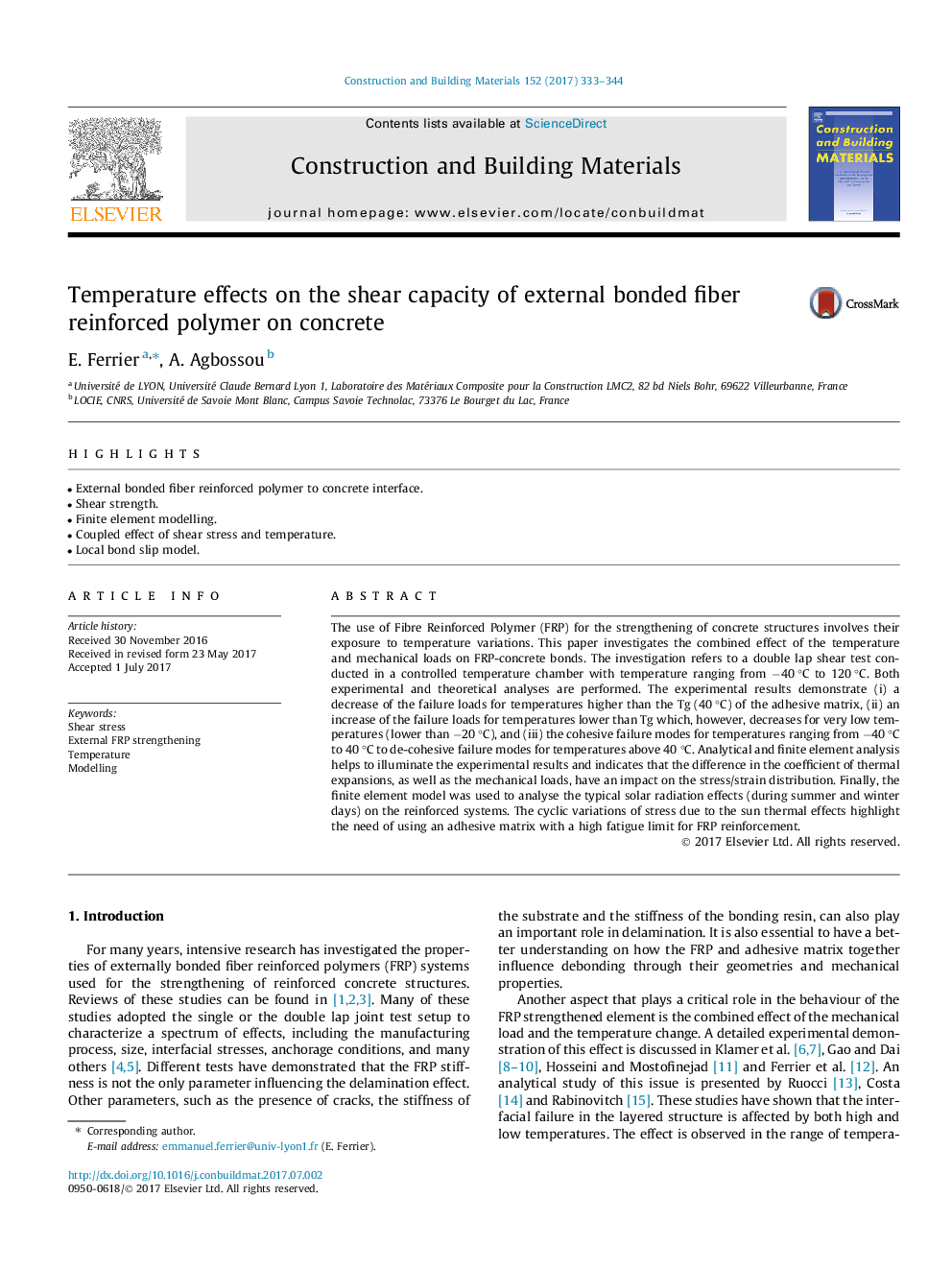| Article ID | Journal | Published Year | Pages | File Type |
|---|---|---|---|---|
| 4912772 | Construction and Building Materials | 2017 | 12 Pages |
Abstract
The use of Fibre Reinforced Polymer (FRP) for the strengthening of concrete structures involves their exposure to temperature variations. This paper investigates the combined effect of the temperature and mechanical loads on FRP-concrete bonds. The investigation refers to a double lap shear test conducted in a controlled temperature chamber with temperature ranging from â40 °C to 120 °C. Both experimental and theoretical analyses are performed. The experimental results demonstrate (i) a decrease of the failure loads for temperatures higher than the Tg (40 °C) of the adhesive matrix, (ii) an increase of the failure loads for temperatures lower than Tg which, however, decreases for very low temperatures (lower than â20 °C), and (iii) the cohesive failure modes for temperatures ranging from â40 °C to 40 °C to de-cohesive failure modes for temperatures above 40 °C. Analytical and finite element analysis helps to illuminate the experimental results and indicates that the difference in the coefficient of thermal expansions, as well as the mechanical loads, have an impact on the stress/strain distribution. Finally, the finite element model was used to analyse the typical solar radiation effects (during summer and winter days) on the reinforced systems. The cyclic variations of stress due to the sun thermal effects highlight the need of using an adhesive matrix with a high fatigue limit for FRP reinforcement.
Keywords
Related Topics
Physical Sciences and Engineering
Engineering
Civil and Structural Engineering
Authors
E. Ferrier, A. Agbossou,
